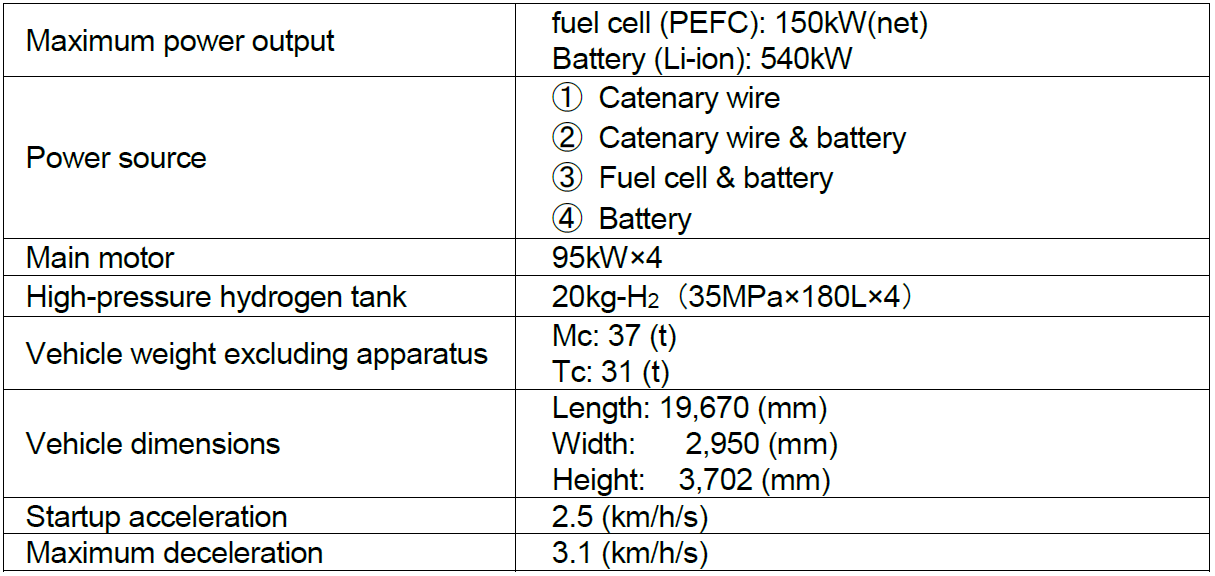R&D
The Basic Running Performance Demonstration of the Fuel Cell Hybrid Powered Test Railway Vehicle
October 24, 2019
Railway Technical Research Institute
RTRI has been developing the fuel cell hybrid powered test railway vehicle uses hydrogen energy in order to save fossil energy and reduce the environmental footprint as a next-generation railway vehicle. We carried out the basic running tests with the test vehicle that was introduced in RTRI’s news release dated August 28, 2019 (*) and demonstrated its basic running performance.
(*) News Release dated August 28 (https://www.rtri.or.jp/eng/press/is5f1i000000c68o-att/201905.pdf)
[Specification of the test railway vehicle]
RTRI has been developing a fuel cell hybrid powered test railway vehicle. The vehicle contributes to reduce the greenhouse gas emission by replacing fossil-fuel-powered diesel multiple unit.
The fuel cell hybrid powered test railway vehicle that was completed in August this year (Fig. 1) has attained the running performance comparable with electric multiple unit (EMU) and allowed larger cabin space by improving the performance and reducing the size of the fuel cell and power converters. The major specifications of the test vehicle are shown in Table 1:
Table 1: The major specification of the test railway vehicle

[Outline and results of the basic running performance test]
RTRI carried out the basic running tests on the test track at RTRI with the maximum speed of 45km/h and demonstrated the basic running performance of the test vehicle with fuel cell and battery hybrid system as follows.
・ The test vehicle can attain the startup acceleration of 2.5km/h/s. This is comparable to EMU and has been attained by improving the power output of the fuel cell, etc.
・ The test vehicle is driven by the fuel cell and battery hybrid power supply, and:
(a) In acceleration, the motor is driven by the hybrid power of fuel cell and battery.
(b) In deceleration, the battery is charged by regenerative power and fuel cell power.
(c) While coasting and standing, the battery is charged by the fuel cell power.(Fig. 2)
・ Using these power modes, the state of charge of the battery (SOC) can be maintained at the same SOC before and after the running. (Fig. 3)
・ The two fuel cells charge the battery and the fuel cell output was up to 139kW so far. (Fig. 4)
[Further improvement and development]
Through the running tests on RTRI’s test track, we will enhance the energy efficiency by improving the method of controlling the hybrid system and develop a controlling method to reduce the fuel cell output fluctuations.
◇ Part of this development has been implemented with the subsidy for railway technical development by the Ministry of Land, Infrastructure, Transport and Tourism.
* You can see all the photos and figures in the PDF file above.
